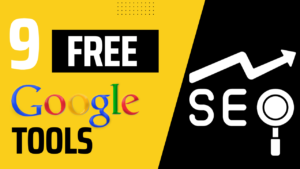
A meta description is a meta tag which consists of a summary of a web page. Its size is generally between 155 to 158 characters. SEO consultants and web editors write their meta descriptions so that they appear in an optimized manner on Google.
Express reading: summary of what you will learn about the meta-description tag
- Definition: Descriptive text displayed on search engine results pages.
- Location: Find your tag in your site’s source code.
- Meta description optimization: 7 tips for writing content that improves your click-through rate.
- Examples: 3 concrete cases of relevant descriptions.
To find out all the details, just keep reading!
What is a meta description?
Here is the definition of a meta-description: a meta-description is an extract of text which summarizes the content of a web page and which is placed in the header of the HTML file. For full display on Google, the size of this tag generally does not exceed 158 characters (920 pixels). It is visible on the results page of a search engine and must be optimized.
How does the meta description appear in search engines?
The meta-description appears under the title of your content (meta title tag), in the results pages of a search engine. Although they have confirmed their lesser importance, adding a key word or phrase to a meta-description is good on-page SEO practice.

An SEO factor
Having a meta-description associated with each page of your site increases your chances of appearing among the first results. However, Google has clarified that as of September 21, 2009, the meta description and meta-keyword tag will no longer be taken into account by their ranking algorithms.
However, it has an indirect effect on your positioning in the SERP! This is what I explain to you in the following point.
Increase your click-through rate
Although it is no longer an SEO factor, a quality meta description can help you improve your click-through rate (CTR) on search engine results pages (SERPs), which is an excellent signal of ranking.
Indeed, the higher the number of users clicking on your link, the more your CTR increases. This shows Google that your result is highly relevant to the query.
If a high number of people click on your link, then Google will tend to display your link more when certain phrases and keywords are used in the query. This is why it is important to include a well-optimized meta description on each page.
How to find the meta description?
Meta tags must appear in the part of an HTML document. So, to add it, you will need to access the source code of your site. On Google Chrome, Mozilla Firefox, you can right click > Show source code (or press CTRL+U).
Once the source code is displayed, search the source for the name=description meta tag. See below :

HTML example of the tag
<head>
<meta name="description" content="Here is an example of a meta description. Search engines will usually display this text in search results.">
</head>Empty meta descriptions
When the meta description has not been configured, search engines tend to display the first paragraph of the post. This can be a problem because this paragraph is not always a good summary of the content. This can therefore have an impact on SEO.
How to write the best meta description for SEO?
Now that you know why to use this tag, let’s optimize it. There are some common characteristics of quality meta descriptions. If you’ve never written one before, then here’s some information that will help you. These descriptions do not appear on the page. They are only visible to web crawlers and to your developer when viewing your website code.
Here are 7 more tips to consider when writing a meta description.
1- Length should not exceed 155-158 characters
The length of this tag can vary depending on the information you want to communicate about your content.
The optimal length should therefore be determined so as to:
- adequately describe your content,
- get clicks
- be useful.
Google may choose not to display the entire description, which is why we advise you not to exceed 155 and 158 characters.
the optimal size of the meta description is more precisely expressed in pixels. the number of characters displayed in the serp may vary depending on the width of each character.
- Google : 920 pixels = 158 characters
- Bing : 980 pixels = 168 characters
- Mobile : 680 pixels = 120 characters
2- Add your focus keyword
What is the content of this page about? What search phrase do you think people will use before arriving on the SERP? You may have written a list of SEO keywords. If you used an SEO agency, you probably got an audit of your website including all of your most popular keywords and key phrases, as well as a comparison with your competitors on the Internet.
These keywords must be grouped and separated into different contents. Each page must have a description that includes one of the keywords (the main keyword). For example, if you want to rank for “healthy pizza recipes,” your description could start with “See the best healthy pizza recipes for a meal that’s just as tasty, but lower in calories. »
Tip : It is important to use a keyword within the first 120 characters. I prefer to include one in the first 10 words when possible. Additionally, everything you write in the description should be relevant to the content of the page, which means using certain keywords multiple times throughout the body copy.
3- Be persuasive
What information do you want to communicate to your target? How do you get them to click on your link? By using action verbs and an inspiring, uplifting tone, you will have a greater impact on potential visitors.
The Internet user must therefore have access to a preview of your content. He wants to know what to expect if he clicks on the link. Descriptions should also be written as a tool to build user trust.
Unlike a caption which appears after a message, the description is seen before the content and must therefore attract curiosity.
4- End with a call to action
Here again, it’s about arousing the interest of the Internet user. A call to action (learn more, get it now, request a free quote, sign up for free…) makes you want to click the link and get something, especially when it’s free.
5- Spice it up with relevant information
It is relevant to give information about the product or service you are selling on the page. You can add its price, reference number, manufacturer or brand name, and any other important information.
6- Always be relevant
It’s not just about using the main keyword multiple times on the page. You also want to make sure the content is relevant to the topic you’re trying to rank for.
If the keyword used in the meta description is “Shopify SEO Optimization”, then the page must exclusively include the “best SEO optimizations for Shopify” as well as links to tutorials. However, it could also be content that offers Shopify apps. Sometimes you have to be very specific about the content of the page to be relevant in search results.
7- Write about something new
Do you have any interesting trends on Twitter or Instagram? What are people talking about in Facebook groups that relate to your industry or product types? You can draw inspiration from these conversations to come up with keywords and content ideas.
Your content must be unique in order to rank higher than competitors.
You can expand sections, adding tips or answering frequently asked questions. Don’t hesitate to publish this type of content to stand out from your competitors. This technique works best when your content is unique and of higher quality than that of your competitors.
Conclusion
In this article, I presented 7 tips for optimizing your metadescription tag. It’s now up to you to adapt these according to the content you present and the search intention of your potential reader.
As always, there is no miracle recipe. However, with common sense and experience, you will be able to find the most suitable solutions to improve your click rate, and therefore your SEO!
And you, do you have any other tips for optimizing your descriptions on search engines? Are you ready to try applying some of the best practices presented in this post?





